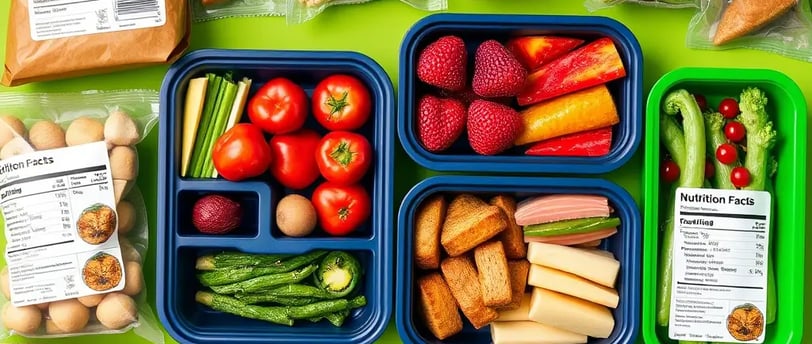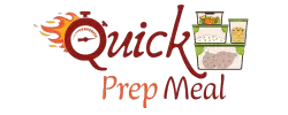
Meal Prep Smarts: How to Read Food Labels for Better Choices
With the basics in place, dive into how to read and interpret food labels to make informed decisions about what fits your nutritional and Meal Prep goals.
GROCERY SHOPPING
Mae Ellison
2/22/20255 min read


Food Label Intelligence: How to Make Strategic Meal Prep Choices
Navigating the maze of nutritional information on food packages can feel overwhelming, but mastering food label intelligence is the key to unlocking healthier, smarter meal prep choices. In today’s health-driven world, understanding food labels isn’t just about reading numbers—it’s about deciphering a story that guides you toward a balanced diet and optimal well-being. This article is tailored for individuals looking to refine their nutritional strategies, whether you’re a busy professional juggling responsibilities or a dedicated wellness advocate. We’ll explore how to decode essential nutritional facts—from serving sizes and calorie counts to ingredient transparency and clean label trends. By integrating strategic meal prep techniques with clear, actionable insights, you can select products that not only satisfy your taste buds but also support your long-term health goals. Get ready to transform your grocery shopping and meal planning experience with expert tips that make healthy eating both accessible and enjoyable.
Reading Food Labels Smarter: Deciphering Nutritional Content
What Do Food Labels Tell Us? Unlocking Their Value
Beyond compliance, food labels act as vital tools that enable informed decision-making. They provide essential nutritional information that guides your meal planning. Understanding the basics of food labels is the first step toward achieving food label intelligence and ensuring that every meal prep choice supports your health goals.
Decoding Nutritional Information
At the heart of every food package is the nutritional facts panel—detailing calories, fats, carbohydrates, proteins, and sodium. Learning to interpret these metrics, such as calorie counting, nutrient density, and portion control, is crucial for anyone focused on healthy eating and diet planning. Even small variations in serving sizes can significantly impact your overall nutritional intake.
Regulatory Standards and Key Entities
Food labeling adheres to rigorous guidelines enforced by regulatory bodies such as the FDA and USDA. These organizations ensure that food manufacturers provide accurate, transparent nutritional content and ingredient lists. Understanding these guidelines builds trust in the products you choose and highlights the importance of ingredient transparency and food safety.
Common Food Label Terminology
Familiarize yourself with terms like “clean label,” “organic,” and “non-GMO” to demystify the process of selecting healthier options. These labels often signal higher quality ingredients and sustainable production practices, helping you align your meal prep choices with both health and ethical standards.
The Concept of Food Label Intelligence
Defining Food Label Intelligence
Food Label Intelligence is the practice of critically analyzing nutritional information to make strategic meal prep choices. It’s not just about the data; it’s about unraveling the journey of ingredients and understanding how foods are made. This deeper insight empowers you to build a diet that promotes health and wellness from the inside out.
Benefits for Health and Diet Planning
Incorporating food label intelligence into your routine offers numerous benefits. It helps you identify hidden sugars, unhealthy fats, and artificial additives—allowing you to create meal plans that are both nutrient-dense and balanced. This proactive approach fosters sustainable eating habits and supports long-term health.
Insights from Nutrition Experts
Nutritionists and dietitians emphasize the importance of reading and understanding food labels. Their advice shows that even minor adjustments in ingredient selection can lead to significant health benefits. Expert insights bridge the gap between raw nutritional data and practical diet planning strategies.
Integrating Nutritional Terminology into Your Daily Choices
Learning everyday nutritional terms, like macronutrients, dietary guidelines, and ingredient lists, can transform how you shop and cook. Understanding these concepts makes it easier to focus on nutritional quality, ensuring that every food choice you make supports your health goals.
Strategic Meal Prep: Planning for Success
The Importance of Meal Prep in a Healthy Lifestyle
Meal prep is a cornerstone of a healthy lifestyle. It offers a structured approach to diet planning that saves time and reduces decision fatigue. By planning your meals in advance, you can achieve better portion control and maintain a balanced diet—all while seamlessly integrating food label intelligence into your daily routine.
Building a Balanced Meal Plan
A balanced meal plan emerges from blending protein-rich foods, whole grains, and healthy fats while matching serving sizes with your unique nutritional needs. Using food labels as your guide ensures that your meals are both satisfying and nutritionally sound.
Sustainable Eating and Ingredient Transparency
Sustainable eating isn’t just a trend—it’s a lifestyle choice. Opt for foods with transparent ingredient lists and ethical sourcing practices to support both your health and the environment. Embracing labels like “organic” and “non-GMO” leads to more responsible consumption habits and a more sustainable food system.
Tools and Resources for Effective Meal Planning
Numerous apps and online tools can help you organize meal prep and track nutritional intake. From digital meal planners to nutrition trackers, these resources integrate food label data into user-friendly interfaces, enhancing your ability to make consistent, healthy meal choices.
Navigating Nutritional Guidelines and Dietary Trends
Understanding Dietary Guidelines
National dietary guidelines provide a framework for healthy eating by outlining recommended daily nutrient intakes. Familiarizing yourself with these guidelines enables you to interpret food labels better and tailor your meal plans to meet your nutritional goals.
Interpreting Food Labels for Macronutrients and Micronutrients
Food labels detail both macronutrients (proteins, fats, carbohydrates) and micronutrients (vitamins and minerals). Understanding this breakdown is key to ensuring your diet supports overall health. Focusing on nutrient density and balance can optimize your meal prep choices to meet specific dietary needs.
Trends in Clean Labels and Organic Foods
Rising consumer demand for transparency and healthier options has popularized clean labels and organic foods. These trends reflect a broader movement toward sustainable and ethical food production. As manufacturers adapt, food labels are becoming more detailed and consumer-friendly, making it easier to identify quality products.
Avoiding Common Pitfalls in Food Label Reading
Even experienced consumers can be misled by confusing terminology or marketing buzzwords. Common pitfalls include misinterpreting serving sizes, overlooking added sugars, or taking buzzwords at face value. This section offers practical advice to avoid these errors and maintain sharp food label intelligence.
Effective Tips for Mindful Meal Planning Decisions
Simple Process for Decoding Nutrition Labels
When making strategic meal prep choices, mastering the art of food label analysis is crucial. Follow this systematic approach:
Start with the Serving Size
Review the serving size on the packaging. Since all nutritional values are based on this unit, compare it to your actual consumption to accurately assess your nutrient intake.Examine the Nutritional Facts Panel
Focus on key metrics such as calories, fats, carbohydrates, proteins, and sodium. Analyze the breakdown of macronutrients and micronutrients, using daily value percentages to ensure the product meets your nutritional goals.Closely Examine the Ingredients List
Ingredients are listed in descending order by weight. Scan for added sugars, unhealthy fats, or synthetic additives. Prioritize products with recognizable, natural ingredients for nutrient-dense meal prep choices.Look for Additional Information
Check for extra labels or claims like “organic,” “non-GMO,” or “clean label.” These indicators often signal higher quality or stricter production standards, helping you make informed decisions.
Case Studies: Comparing Similar Food Products
Analyzing real-world examples can solidify your understanding of food label intelligence. Compare two similar products—such as different brands of granola or yogurt—to evaluate differences in calorie count, ingredient quality, and nutritional benefits. This practical exercise highlights how minor adjustments in ingredient choices or portion sizes can significantly impact your overall health and meal planning.
Expert Tips for Optimizing Meal Prep Choices
Health professionals offer valuable insights into refining your meal prep strategies. Nutritionists and dietitians recommend planning meals ahead, incorporating a variety of nutrient-dense foods, and consistently using food labels as your guide. Their tips help refine your approach to choosing foods that align with your dietary goals while ensuring each meal is both delicious and nutritious.
Future Trends in Food Labeling and Meal Planning
The future of food packaging is shifting toward greater transparency and innovation. Expect more detailed nutritional information, including digital integrations and real-time product updates. These trends will empower consumers to make even more strategic meal prep choices, paving the way for advancements in both food labeling and sustainable eating practices.
Conclusion
Mastering food label intelligence is more than just a skill—it’s a pathway to a healthier lifestyle. By understanding nutritional information, staying informed about regulatory standards, and leveraging expert insights, you can transform your meal prep process. Whether comparing food products or planning balanced meals, every decision contributes to your overall well-being. Embrace these strategies and let your next grocery run be guided by clear, informed choices that support a sustainable, healthy future.
